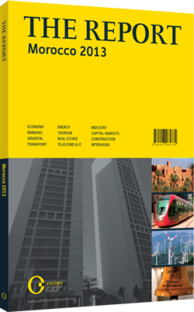OBG talks to Hartmut Goeritz, Director-General, APM Terminals Tangier

Interview: Hartmut Goeritz
How do you expect the port of Tanger-Med to develop, and what external factors will support growth?
HARTMUT GOERITZ: Due to its strategic position at the crossroads of major trade lanes in the Strait of Gibraltar, we expect to see continued trans-shipment volume growth through Tanger-Med. Previously, The port was mainly a trans-shipment hub for West African cargo, but it now offers an expanded product range to maritime companies. Intending to further develop local cargo flows by combining the “gate concept” with the “hub concept”, maritime companies will find synergy by combining cargo flows to maximise vessel utilisation. This in turn will support further trans-shipment growth.
The competition with surrounding ports can be seen as a complementary option for maritime companies as it allows them some flexibility with handling cargo flow fluctuations. Moreover, with the widening of the Panama Canal, Tangier remains approximately equidistant to North Europe whether vessels sail east or west coming from East Asia. This opens up huge potential for Tanger-Med, not only in terms of trans-shipment volumes, but also in terms of the potential to offer additional services in the adjacent free trade zone. These can include services such as container repair, medium-term storage, inspections and labelling. In all, the proximity of North Europe, West Africa, the Mediterranean, the Middle East and now, through a new service, North America, puts Tanger-Med in a strong position to capture more trans-shipment traffic.
What is the state of the overall domestic intermodal transportation and logistics network?
GOERITZ: Domestic intermodal transportation is still very much reliant on road transportation. However, with increased development of local cargo, it is likely that road transportation will become congested and that delays will occur, not to mention the negative environmental impact due to the distances involved. That being said, investments have been made in rail transportation to link Tanger-Med to Casablanca. Hence, there is the potential to further grow rail volumes. A major drawback though is that the line between Tanger-Med and Casablanca is currently being used for both passenger and freight operations. Improvements are expected through the newly created Moroccan Agency for the Development of Logistics, whereby specific upgrade programmes for each port have been adopted, focused on improving infrastructure, equipment and related logistical networks.
In what way can Tanger-Med be improved to maintain its competitiveness in the medium term?
GOERITZ: For maritime companies to choose Tanger-Med over its competitors the port must create a unique value position in the future. It is well known that shipping lines have been struggling financially and that port costs are a large factor to their bottom line. Having been constructed to handle the largest container vessels in operation, the port has all the facilities to offer a full service. For Tanger-Med to continue to be attractive to maritime companies, port services and charges need to be dynamic. This might necessitate a different perspective from the port authority, as traditionally the larger the vessel is, the higher the rate has been. Yet, shipping lines are now ordering larger vessels to save costs. Perhaps, to motivate port calls from larger-scale vessel it would be better not to penalise the shipping lines, but rather to reward the benefit in the additional volumes these vessels can bring.
How can bottlenecks in Morocco’s maritime shipment and container network be reduced?
GOERITZ: For Morocco to be a greater player in the global supply chain, it will have to maintain a stable and reliable platform. Making business easier through developing e-commerce will be key, as shipping lines and their customers demand more visibility on the delivery time of their cargo. Promoting the rail network with the inclusion of inland container depots, with options like Customs-bonded warehousing, would help as well.
You have reached the limit of premium articles you can view for free.
Choose from the options below to purchase print or digital editions of our Reports. You can also purchase a website subscription giving you unlimited access to all of our Reports online for 12 months.
If you have already purchased this Report or have a website subscription, please login to continue.

